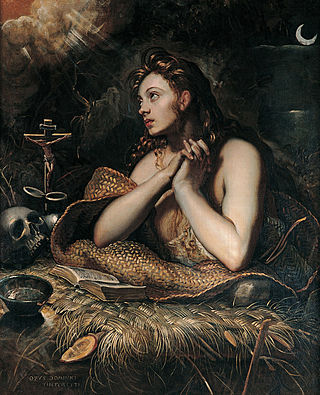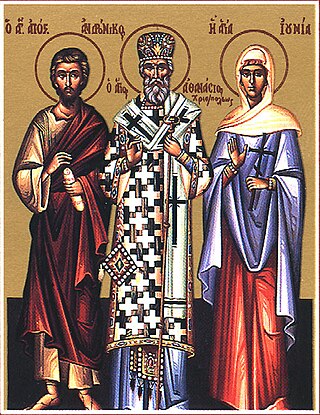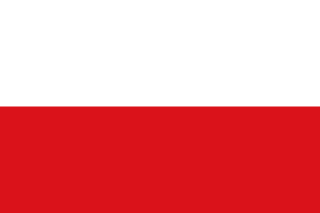
Mary Magdalene was a woman who, according to the four canonical gospels, traveled with Jesus as one of his followers and was a witness to his crucifixion and resurrection. She is mentioned by name twelve times in the canonical gospels, more than most of the apostles and more than any other woman in the gospels, other than Jesus's family. Mary's epithet Magdalene may be a toponymic surname, meaning that she came from the town of Magdala, a fishing town on the western shore of the Sea of Galilee in Roman Judea.

Year 1307 (MCCCVII) was a common year starting on Sunday of the Julian calendar.
Year 1250 (MCCL) was a common year starting on Saturday of the Julian calendar.
The Fraticelli or Spiritual Franciscans opposed changes to the rule of Saint Francis of Assisi, especially with regard to poverty, and regarded the wealth of the Church as scandalous, and that of individual churchmen as invalidating their status. The Fraticelli were declared heretical in 1296 by Boniface VIII.

Fra Dolcino was the second leader of the Dulcinian reformist movement who was burned at the stake in Northern Italy in 1307. He had taken over the movement after its founder, Gerard Segarelli, had also been executed in 1300 on the orders of the Roman Catholic Church. Although the beliefs and spirituality of the Dulcinian sect were inspired by the teachings of Francis of Assisi, who had founded the Franciscan Order in 1210, their beliefs were condemned as heresy by the Catholic Church. The Papacy condemned their practices of poverty, liberty and opposition to the feudal system.

Vercelli, is a city and comune of 46,552 inhabitants in the Province of Vercelli, Piedmont, northern Italy. One of the oldest urban sites in northern Italy, it was founded, according to most historians, around 600 BC.
The Dulcinians were a religious sect of the Late Middle Ages, originating within the Apostolic Brethren. The Dulcinians, or Dulcinites, and Apostolics were inspired by Franciscan ideals and influenced by the Joachimites, but were considered heretical by the Catholic Church. Their name derives from the movement's leader, Fra Dolcino of Novara, who was burned as a heretic on the orders of Pope Clement V.
Gerard or Gherardo or GherardinoSegarelli or Segalelli was the founder of the Apostolic Brethren. He was burned at the stake in 1300.
The Apostolic Brethren were a Christian sect founded in northern Italy in the latter half of the 13th century by Gerard Segarelli, a native of Alzano in the territory of Parma. He was of low birth and without education, applied for membership in the Franciscan order at Parma, and was rejected. Ultimately he resolved to devote himself to the restoration of what he conceived to be the apostolic manner of life. Most of the spirit of the movement continued in the Dulcinian movement.

Jacopone da Todi, O.F.M. was an Italian Franciscan friar from Umbria. He wrote several laude in the local vernacular. He was an early pioneer in Italian theatre, being one of the earliest scholars who dramatised Gospel subjects.

Junia or Junias was a Christian in the first century known from Paul the Apostle's letter to the Romans.

The (Princely) County of Tyrol was an estate of the Holy Roman Empire established about 1140. After 1253, it was ruled by the House of Gorizia and from 1363 by the House of Habsburg. In 1804, the County of Tyrol, unified with the secularised prince-bishoprics of Trent and Brixen, became a crown land of the Austrian Empire. From 1867, it was a Cisleithanian crown land of Austria-Hungary.

Gilles de Rais, Baron de Rais, was a knight and lord from Brittany, Anjou and Poitou, a leader in the French army, and a companion-in-arms of Joan of Arc. He is best known for his reputation and later conviction as a confessed serial killer of children.

The Roman Catholic Archdiocese of Vercelli is a Latin rite Metropolitan see in northern Italy, one of the two archdioceses which, together with their suffragan dioceses, form the ecclesiastical region of Piedmont.

The Diocese of Novara is a Roman Catholic diocese in the Piedmont region of northwest Italy. It is a suffragan of the Archdiocese of Vercelli.

Ralph de Monthermer, 1st Baron Monthermer, Earl of Gloucester, Hertford, and Atholl was an English nobleman, who was the son-in-law of King Edward I. His clandestine marriage to the King's widowed daughter Joan greatly offended her father, but he was quickly persuaded to pardon Ralph.

Matteo I Visconti (1250–1322) was the second of the Milanese Visconti family to govern Milan. Matteo was born to Teobaldo Visconti and Anastasia Pirovano.
Apostolici, Apostolic Brethren, or Apostles, are the names given to various Christian heretics, whose common doctrinal feature was an ascetic rigidity of morals, which made them reject property and marriage.
The siege of Novara was a battle that took place in the summer and autumn of 1495 during the Italian War of 1494–1495. While king Charles VIII of France was retreating to the north after facing rebellions in the recently conquered Kingdom of Naples, and managed to escape the destruction of his army at the Battle of Fornovo, his cousin and future king Louis d'Orleans opened a second front by attacking the Duchy of Milan and occupying the city of Novara. In an effort to retrieve it, the Milanese army and their League of Venice allies besieged Novara for three months and fourteen days. Suffering from severe starvation and disease, the French lost about 2000 soldiers before Louis had to surrender and withdraw.